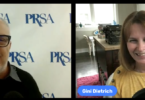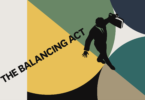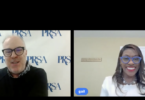With all the talk lately about changes in how our clients communicate with audiences — disruptive technologies, innovation, shifting consumer habits — certain key aspects of the PR profession have remained constant. We still use many of the same skills and tools today that we always have.
It’s my great honor to be professional adviser to the Belmont University PRSSA Chapter, which affords me the opportunity to talk with aspiring PR professionals on a regular basis. What I share with them about foundational knowledge — the things that have remained the same — includes the most important skills that we look for in people we hire at my firm, MP&F Strategic Communications.
The first thing a young professional needs is an undying curiosity about the world. Our clients come from every corner of business and industry, and to be effective partners with them we must understand what they do, how they make decisions and how they interact with other industries. Without innate curiosity and a desire to learn something new every day, picking up all that knowledge might seem tedious.
The second thing that has not changed for communicators is our ability to process all that information and cull from it a concise and compelling story that informs and persuades an audience.
Along with curiosity and storytelling, we must have a knack for thinking and advising strategically. One of the most valuable things we provide clients is our perspective. Our ability to view a situation through a different lens lets us ask bigger-picture questions that lead to sharper strategies and more effective communications.
Another constant in the PR profession is the way that we work with the media. Our relationships with reporters and editors continue to be built on the credibility that we establish for ourselves and our clients.
Changes in technology and client expectations
Even as the building blocks of our profession remain the same, there’s no denying that change has come to public relations.
Where we once had relatively few channels to transmit information to audiences, communication outlets are now innumerable. Our capacity to identify audiences and determine the best ways to connect with them has been greatly improved by technology and data, which in turn have allowed us to connect clients to audiences faster than ever before.
Technology has also lets us better track our successes. We know who reads the emails or the stories, who looks at the website, who responds to the texts. For retail clients, technology lets us track a path from the message to the cash register.
That same speed has affected us in other ways as well. The 24/7 pace of news media means our clients must respond quicker than ever before, and we have to help them anticipate and prepare — especially for crisis situations. The around-the-clock news cycle also means that news doesn’t stop at 5 p.m. on Friday, and our clients expect us to be available whenever we’re needed.
Amid all the changes in our profession, many fundamentals remain skills and needs remain the same and are gaining importance, given the demands of the various channels we now use to communicate.
Staying relevant is as much about looking ahead as looking behind. Maybe that’s what makes it so exciting.
Keith Miles is a partner at MP&F Strategic Communications in Nashville, Tenn. He was the 2016 PRSSA Teahan Outstanding Professional Adviser for his work with Belmont University. An accomplished photographer and songwriter, he is a member of the American Society of Composers, Authors and Publishers (ASCAP).








Consistency is over rated. Inconsistency makes you interesting, more newsworthy and is at the heart of being strategic
Most major discoveries of genuinely new ideas result from accidents, mistakes and inconsistency.